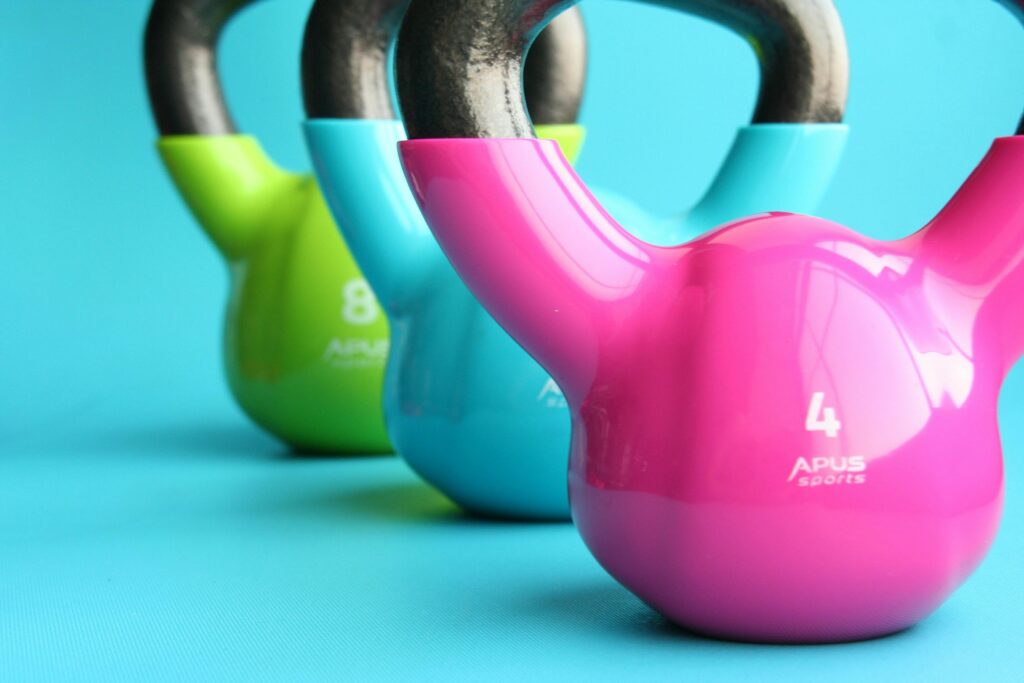Introduction
Kettlebells, those cannonball-shaped weights with a handle, have become a staple in gyms and fitness routines worldwide. Despite their seemingly simple design, kettlebells offer a versatile and effective way to enhance your fitness. From strength building to cardiovascular conditioning, kettlebell exercises provide a plethora of benefits. In this article, we’ll explore the advantages of incorporating kettlebell exercises into your workout regimen and why these compact weights deserve a place in your fitness routine.
The Appeal of Kettlebells
Kettlebells have a unique shape that sets them apart from traditional dumbbells and barbells. The offset center of gravity challenges your balance, stability, and coordination, making kettlebell exercises more dynamic and functional. This design allows for a wide range of movements, from swinging and lifting to pressing and squatting, engaging multiple muscle groups simultaneously.
Benefits of Kettlebell Exercises
- Full-Body Workout Kettlebell exercises are inherently compound movements, meaning they work multiple muscle groups at once. For example, the kettlebell swing targets the glutes, hamstrings, core, and shoulders, providing a full-body workout in a single move. This efficiency is ideal for those with limited time, as it maximizes the impact of each exercise session.
- Improved Strength and Power Kettlebell training is an excellent way to build both strength and power. The explosive nature of many kettlebell movements, such as the swing and snatch, helps develop power by recruiting fast-twitch muscle fibers. Additionally, exercises like kettlebell presses and squats enhance muscle strength, making kettlebells a versatile tool for strength training.
- Enhanced Cardiovascular Fitness Kettlebell exercises can elevate your heart rate and provide an effective cardiovascular workout. The continuous, rhythmic nature of movements like the kettlebell swing or high-intensity circuits incorporating kettlebell exercises improves cardiovascular endurance and burns calories. This combination of strength and cardio makes kettlebell training an efficient way to boost overall fitness.
- Core Stability and Balance The off-centered weight of a kettlebell requires you to engage your core and stabilizer muscles to maintain balance and control during exercises. Movements like the Turkish get-up and kettlebell windmill are particularly effective for enhancing core stability and improving balance. A strong core is essential for overall functional fitness and injury prevention.
- Functional Strength and Mobility Kettlebell exercises mimic everyday movements, promoting functional strength that translates to real-life activities. The swinging, lifting, and carrying motions of kettlebell training improve mobility, flexibility, and coordination, making it easier to perform daily tasks with ease and reduced risk of injury.
- Flexibility and Joint Health Unlike traditional weightlifting, which often involves linear movements, kettlebell exercises require a broader range of motion. This dynamic movement pattern helps improve flexibility and joint health by encouraging mobility in multiple planes of motion. For instance, the kettlebell swing involves hip hinging and shoulder movement, promoting joint flexibility and reducing stiffness.
- Versatility and Convenience One of the standout benefits of kettlebell training is its versatility. Kettlebells can be used for a wide variety of exercises, from strength and power moves to endurance and flexibility drills. This adaptability makes kettlebells suitable for all fitness levels and goals. Additionally, kettlebells are relatively compact and portable, making them convenient for home workouts or taking to the park for an outdoor session.
Key Kettlebell Exercises
To get started with kettlebell training, here are a few key exercises to include in your routine:
- Kettlebell Swing
- Targets: Glutes, hamstrings, core, shoulders
- How to: Stand with feet shoulder-width apart, grip the kettlebell handle with both hands, hinge at the hips, and swing the kettlebell between your legs. Use your hips to drive the kettlebell forward to shoulder height, then allow it to swing back between your legs. Repeat in a rhythmic motion.
- Turkish Get-Up
- Targets: Core, shoulders, legs
- How to: Lie on your back with one knee bent and the kettlebell held overhead in the same-side hand. Use your free hand to help push yourself up to a standing position while keeping the kettlebell overhead. Reverse the movement to return to the starting position.
- Kettlebell Goblet Squat
- Targets: Quads, glutes, core
- How to: Hold the kettlebell by the horns (sides of the handle) at chest level. Stand with feet shoulder-width apart, then squat down while keeping your chest up and the kettlebell close to your body. Return to standing position and repeat.
- Kettlebell Clean and Press
- Targets: Shoulders, core, legs
- How to: Start with the kettlebell on the ground between your feet. Bend your knees and grip the kettlebell with one hand. Clean the kettlebell to shoulder level by extending your hips and pulling the kettlebell up. From the shoulder position, press the kettlebell overhead. Lower it back down and repeat.
Conclusion
Kettlebell exercises offer a multitude of benefits that can enhance your fitness journey. From full-body workouts and improved strength to enhanced cardiovascular fitness and core stability, kettlebells provide a versatile and efficient way to achieve your fitness goals. Incorporating kettlebells into your routine can lead to functional strength, better mobility, and a stronger, healthier body. So, grab a kettlebell, embrace the challenge, and unlock the potential of this dynamic fitness tool.




